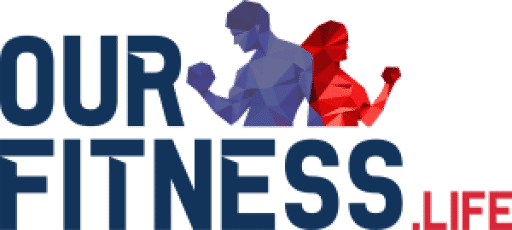While fat loss appears to be a complicated topic, it is actually a lot more simple than we often assume. However, when it comes to targeted fat loss, things become a little less clear.
So, what is targeted fat loss? As the name suggests, this is where individuals attempt to lose fat in a specific area of the body.
Typically, men and women tend to store excess body fat in different locations. While women tend to store more fat in the lower region of the body, men store more fat in the upper region.
As a result, a common area that men often aspire to improve is the chest.
This article will begin by discussing the causes of chest fat and how to lose it. It will then move on to consider exercise and nutrition considerations that will help us lose chest fat.
Table of Contents
What Causes Chest Fat?
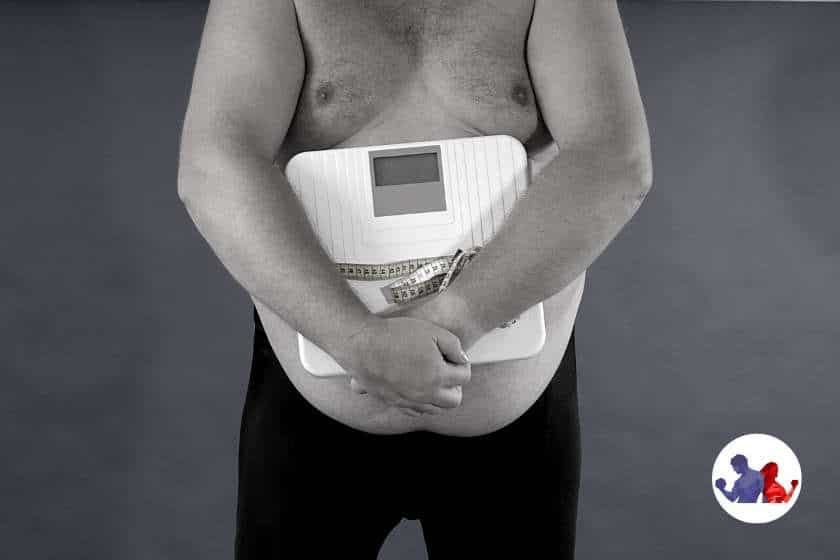
As with all fat gain, an increase in chest fat will occur as a result of a calorie surplus. This is simply where we consume more calories than our body burns.
As a consequence, the body is left with an excess of energy. This energy is stored as body fat which can be broken down and used as fuel when required.
If a calorie surplus is maintained over a chronic time period, it will lead to substantial fat gain.
Although a calorie surplus is ultimately behind weight gain, some individuals may be more inclined to store fat in the chest.
While environmental factors evidently have an impact, genetics appear to influence fat storage and distribution (1).
Furthermore, hormones can predispose individuals to excessive chest fat.
In extreme cases, some individuals may suffer from a condition known as gynecomastia.
Gynecomastia is a condition where an increase in breast tissue occurs in males. The primary cause of this is high or unbalanced estrogen levels (2).
This is a medical condition that must be assessed, reviewed, and treated under the care of a medical professional.
How To Lose Chest Fat?
If a calorie surplus causes fat gain, then a calorie deficit is required for fat loss. This involves cutting calorie intake so that we consume fewer calories than we burn.
A calorie deficit causes stored fat to be broken down in order to fulfill the body’s energy demands. Maintaining the deficit for a prolonged period will cause greater fat reduction.
A calorie deficit can be successfully achieved by making alterations to our nutrition and exercise.
In terms of nutrition, consuming less calories can help create a calorie deficit. Increasing exercise levels will increase calories burned and, therefore, also significantly contribute.
Be aware that during a calorie deficit, fat stores will be used up throughout the body. Therefore, while chest fat will decrease, fat can also be expected to reduce in other areas.
What about chest exercises? Do they help to specifically burn chest fat?
“Spot-fixing” is the term often used to describe performing exercises to target fat loss in specific areas. For example, using chest exercises in an attempt to reduce chest fat.
Unfortunately, based on scientific research, spot-fixing is not possible.
Participants in a study performed six-weeks of abdominal training in an attempt to reduce fat. Results concluded that abdominal training alone did not cause a significant reduction (3).
However, this is not to say that chest exercises are not beneficial for fat loss or improving body composition.
Training the chest can help to improve strength, size, and definition of the pectorals (chest muscles). Combine this with a calorie deficit and the chest will aesthetically improve.
Intense strength training can contribute towards a high-calorie burn (4) and may increase our metabolism (5) thus facilitating a calorie deficit.
The Best Strength Exercises For Chest Development
This section will highlight five of the best strength exercises to allow you to develop the chest and improve definition.
1. Bench Press
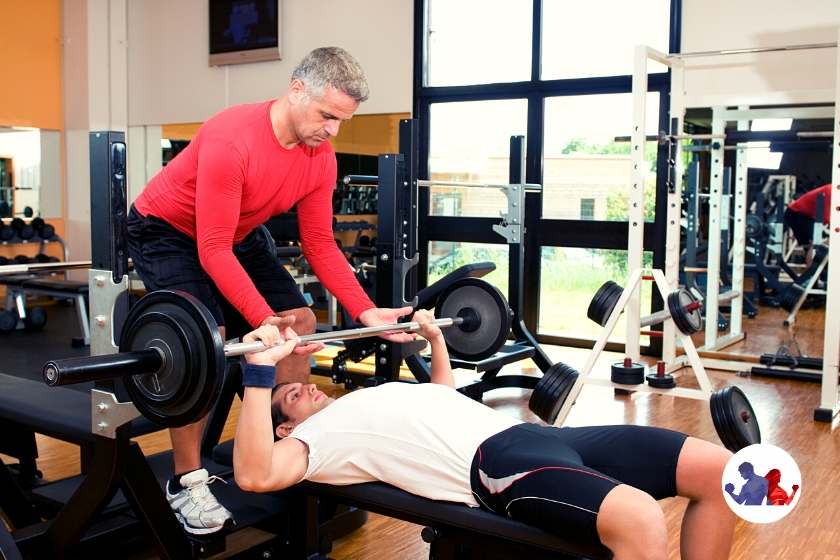
The bench press is seen as the ultimate resistance exercise for chest development. Not only does it place a great demand on the pecs, it also works the deltoids, triceps, and core.
The mechanics of a bench press allow for relatively heavy loads to be lifted. As a result, heavy bench presses can contribute to significant changes in strength, size, and definition.
There are a variety of bench press variations such as the conventional, incline, decline, and close-grip bench press. It can also be performed using a barbell, dumbbells, or kettlebells.
Conventional Bench Press Technique:
- Lie back on a bench and position the body so that eyes align with the bar
- Position the feet under the hips and push the feet into the floor
- Grip the bar using an overhand grip that is slightly wider than shoulder-width
- Engage the core muscles and unrack the bar
- In a controlled fashion, drop the bar to the lower chest
- Powerfully drive the bar upwards to return it to the starting position
2. Push-Ups
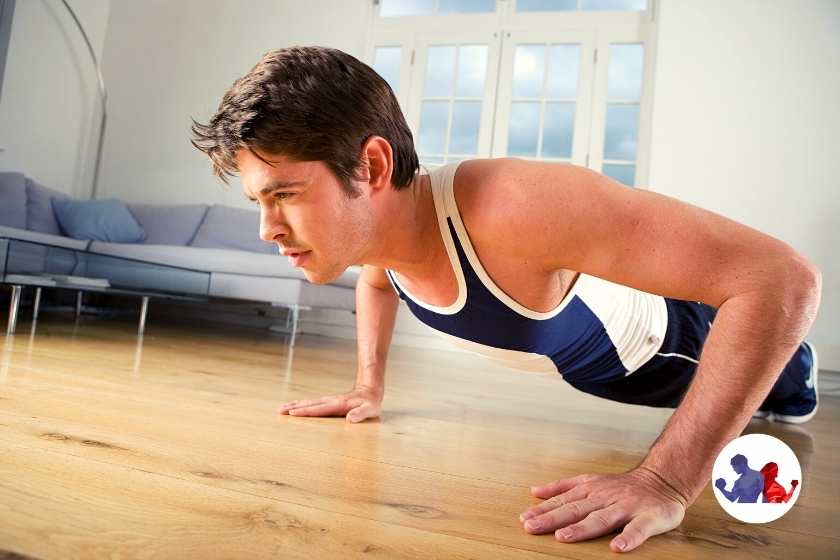
As with the bench press, the push-up is commonly seen as the ultimate bodyweight exercise for chest development.
There are similarities between the bench press and the push-up. One study determined that the two exercises activated the same muscle groups and led to similar strength gains (6).
To target specific parts of the chest, a number of push-up variations can be performed. These include the wide, narrow, decline, and incline push-up.
It is also possible to add external resistance to the push-up in order to increase demand. This can be done by placing a weight on the back or through the use of resistance bands.
Push-Up Technique:
- Begin by placing the hands flat on the floor, a little wider than shoulder-width
- Extend the legs out behind the body
- Engage the core and the glutes to prevent the hips from lifting or sagging
- Hinge the elbows to drop the chest down towards the floor in a controlled manner
- As you descent, prevent the elbows from flaring by tucking the elbows in
- Imaging driving the hands through the floor to propel the body upwards
3. Chest Dips
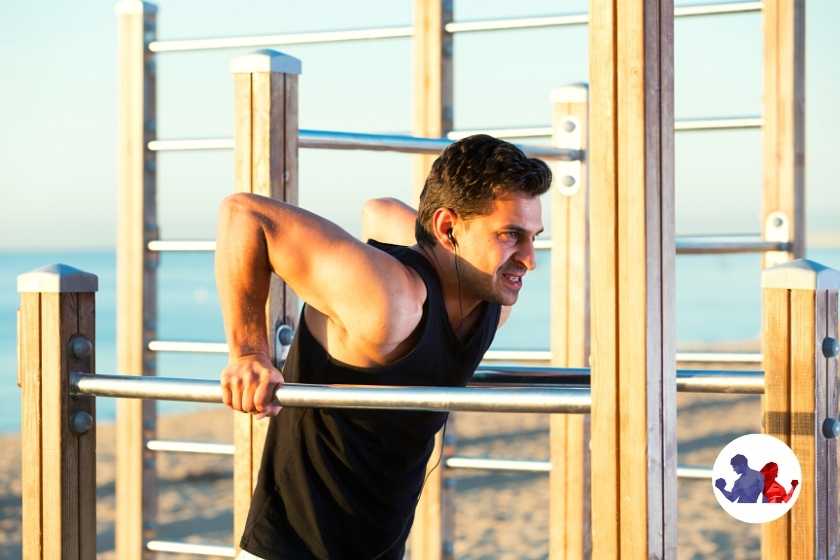
Another superb bodyweight exercise is the chest dip. For this exercise, a dipping bar or station is required.
As the name suggests, this exercise primarily develops the pecs. However, it also activates an array of other muscles in the back, shoulders, and arms.
To maximize progress, it may be necessary to add weight to the chest dip. A dipping belt allows for weight to be added most effectively.
Chest Dip Technique:
- Place the hands on the bars ensuring that the shoulders are directly above the hands
- Engage the core before stepping off the station and letting the body fully hang
- In a controlled fashion, hinge the elbows and allow the body to descend
- Continue the descent until the elbows are approximately at ninety degrees
- Powerfully press into the bars to extend the elbows and return to the starting position
4. Dumbbell Pullovers
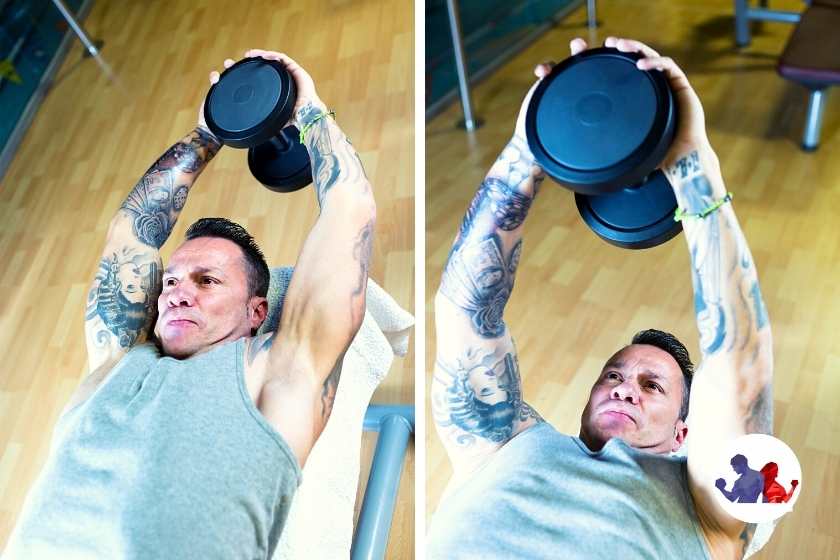
There has been controversy over the next exercise, the pullover. For some time, it was unclear whether the pullover is primarily a chest or back exercise.
However, the most recent research has concluded that the pullover activates the pecs more highly than the lats (7). This makes the pullover an excellent choice for chest development.
The exercise comes with a number of variations including the incline, decline, and bridged pullover. While conventionally performed with a dumbbell, barbells can also be used.
Pullover Technique:
- Lie back on the bench and place the feet on the floor directly under the hips
- Press the dumbbell up and position it directly over the chest
- Engage the core and press the feet into the floor
- Keeping the arms straight, slowly drop the dumbbell over the head
- Once the arms are by the sides of the head, pull the dumbbell back to the starting position
5. Chest Flyes
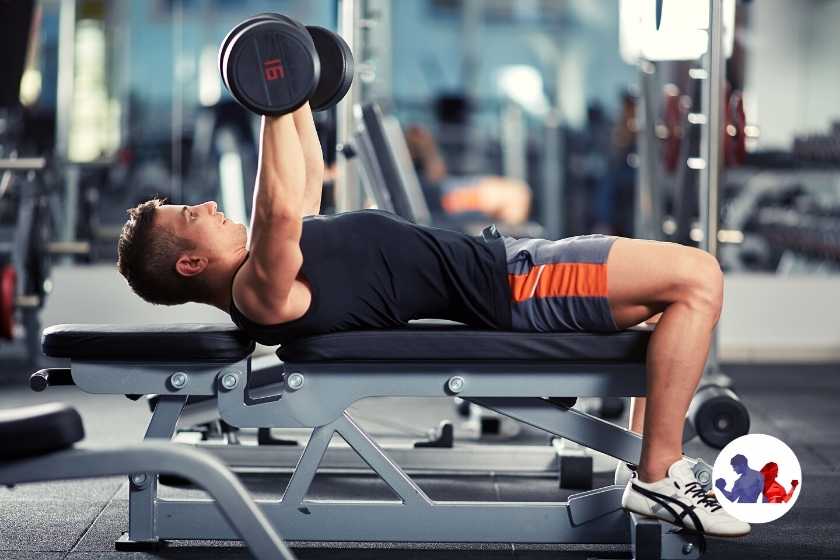
The chest fly would be considered an isolation exercise. This is simply a movement that requires motion around one joint only.
Unlike compound exercises which share the demand across many muscles, isolations place all the stress on one muscle. This can be beneficial for enhancing muscular development (8).
Chest flyes focus on movement through only the shoulder joint. This way, the pecs are subject to significant demand and consequently adapt.
As with the majority of chest exercises, there are a number of chest fly variations. These include incline, decline, and floor flyes.
Chest Fly Technique:
- Start by lying back on a bench with the dumbbells in hand
- Press the dumbbells up so that they are positioned directly over the chest
- Press the feet into the floor and engage the core
- Keeping the arms straight slowly lower the weights to the sides of the body
- Squeeze the pecs to drive the dumbbells back up to the starting position
- Ensure that the elbows stay beneath the line of the shoulders throughout
Related:
What About Cardio Training?
Regular cardiovascular training can bring a wide range of benefits to our health and fitness (9). Therefore, it is recommended that cardio should be performed frequently.
There are two types of cardiovascular exercises that are commonly performed: low-intensity steady state (LISS) and high-intensity interval training (HIIT).
As the names suggest, LISS involves low intensity but long duration while HIIT incorporates high-intensity work for short durations.
While both methods have their unique benefits, they have both been found to burn a large number of calories.
This is particularly significant when it comes to fat loss. The greater amount of calories burned through exercise, the more likely it is that a calorie deficit will be established.
Therefore, it can be concluded that cardio is indeed a useful fat loss tool to employ. However, this should not be at the expense of resistance training.
While a combination of resistance and cardio training is ultimately best (10), resistance training should be the foundation of our training.
Not only will it improve strength and burn calories, it will also help to preserve muscle mass during fat loss.
While a calorie deficit will reduce body fat, it may also lead to the breakdown of muscle tissue. Studies have indicated that resistance training can limit this muscle breakdown (11).
Related:
Diet Considerations For Losing Chest Fat
![]()
As highlighted, both exercise and nutrition are important for reducing fat and improving muscle definition.
Having considered exercise, this section will now outline four diet considerations that should be made to reduce chest fat.
1. Start Tracking Calories
Fat loss will not occur if a calorie deficit is not established. Therefore, if we want to ensure that a deficit is created, it is imperative that we track our calorie intake.
Studies have shown that those who track their nutrition tend to experience better fat loss results (12).
Before beginning to track calories, we must calculate our calorie target. This target takes into consideration our age, sex, height, weight, and activity levels.
There are a number of easy-to-use online calculators that can estimate our calorie target.
Once we have determined our calorie needs, we can start tracking. When tracking, we must make a note of all foods and drinks consumed during the course of the day.
The best way of doing this is to download a calorie-counting app. These apps are extremely useful and simplify the tracking process.
Related:
2. Increase Protein Intake
While tracking calories isn’t difficult, ensuring that we restrict calorie intake can be. Hunger can become a real issue and may cause us to overconsume calories on occasion.
One nutrition method that can help us counteract this is to consume more protein. Protein is the macronutrient found in an abundance in meats, fish, nuts, eggs, and dairy produces.
While it’s primary role is in regards to growth, protein can also decrease our appetite. This is due to the fact that protein regulates two hunger hormones known as ghrelin and leptin (13).
There have been many studies conducted on the impact of high protein diets. The results suggest that a high-protein approach is beneficial for fat loss (14).
Finally, as briefly touched on earlier, consuming more protein during fat loss can also help to preserve muscle mass.
Related:
3. Cut Down On Processed Foods and Alcohol
Reducing the amount of processed foods consumed will have a direct impact on calorie intake. Typically, these foods are sparse on nutrients and extremely high in calories.
Alcohol can also contribute towards excessive calorie consumption. With alcohol containing seven calories per gram, many alcoholic beverages are high in calories.
Therefore, to ensure that a calorie deficit is maintained, it may be worthwhile to cut down on alcohol and processed foods.
Furthermore, from a health standpoint, reducing the intake of processed foods and alcohol will be of great benefit.
Related:
4. Consider The Use Of Supplements
Supplements have become a highly useful tool for fat loss. There are a number of different products that have a variety of uses.
As highlighted, boosting protein intake may assist with fat loss and, therefore, protein supplements may be useful.
There is also a range of fat burning supplements. These contain several ingredients that may help to increase our metabolic rate thus causing a greater calorie burn.
Although these products may be beneficial, always consult a qualified medical professional before taking any new supplement.
Related:
FAQs
What causes chest fat?
The main reason for any fat gain is an overconsumption of calories over a prolonged time period. However, some individuals may be genetically more inclined to store fat in the chest.
How can I reduce chest fat?
A combination of good nutrition and regular exercise can establish a calorie deficit and cause fat loss. A calorie deficit is simply where more calories are expended than consumed.
What exercises reduce chest fat?
It is important to understand that chest exercises will not directly cause fat loss in the chest. This is a myth that is often referred to as “spot-fixing”.
However, performing chest exercises can improve chest muscle definition and improve aesthetics. Some of the best exercises include the bench press, push-ups, dips, and flyes.
What foods reduce chest fat?
In a similar way to specific exercises, there are no particular foods that reduce chest fat.
Instead of focusing on the type of food, focus on consuming fewer calories over a prolonged period. This will cause fat loss to occur comprehensively throughout the body.
Does running reduce chest fat?
Cardiovascular training can play an important role in fat reduction. This is primarily down to the number of calories expended during aerobic exercise.
Therefore, cardio can contribute towards the calorie deficit required to reduce chest fat.
How do I tone my chest?
A variety of chest strength exercises can help to improve muscle definition and size. Providing these exercises are performed regularly, the chest will adapt and tone will improve.
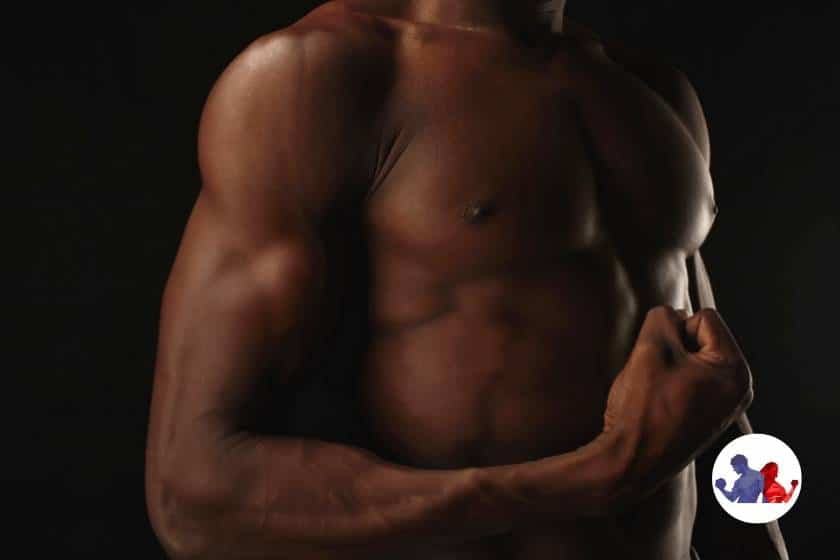
Summary
When it comes to reducing chest fat, it’s important to understand that a calorie deficit is required. This energy deficit causes fat stores to be broken down throughout the body.
This calorie deficit can be attained through alterations with our exercise and nutrition.
Exercising more frequently will increase the number of calories burned. A combination of resistance training and cardio will yield the best fat loss results.
Reducing our calorie intake will also have a tremendous impact on creating a deficit. Therefore, if we want to ensure success, we should track our nutrition on a daily basis.
Ultimately, we cannot specifically target fat loss in the chest. However, with these alterations body fat will comprehensively reduce throughout the body – this includes the chest.
Best Fat Burner Supplements
Our team have picked up the best fat burner supplements currently on the market to support your goals.- https://www.ncbi.nlm.nih.gov/pmc/articles/PMC2585758/
- https://www.ncbi.nlm.nih.gov/pmc/articles/PMC3987263/
- https://pubmed.ncbi.nlm.nih.gov/21804427/
- https://www.ncbi.nlm.nih.gov/pmc/articles/PMC5524349/
- https://pubmed.ncbi.nlm.nih.gov/8175496/
- https://pubmed.ncbi.nlm.nih.gov/24983847/
- https://pubmed.ncbi.nlm.nih.gov/21975179/
- https://www.ncbi.nlm.nih.gov/pmc/articles/PMC4592763/
- https://www.ncbi.nlm.nih.gov/pmc/articles/PMC6172294/
- https://www.ncbi.nlm.nih.gov/pmc/articles/PMC3487794/
- https://pubmed.ncbi.nlm.nih.gov/28871849/
- https://www.ncbi.nlm.nih.gov/pmc/articles/PMC5568610/
- https://www.ncbi.nlm.nih.gov/pmc/articles/PMC2775646/
- https://www.ncbi.nlm.nih.gov/pmc/articles/PMC5644969/
